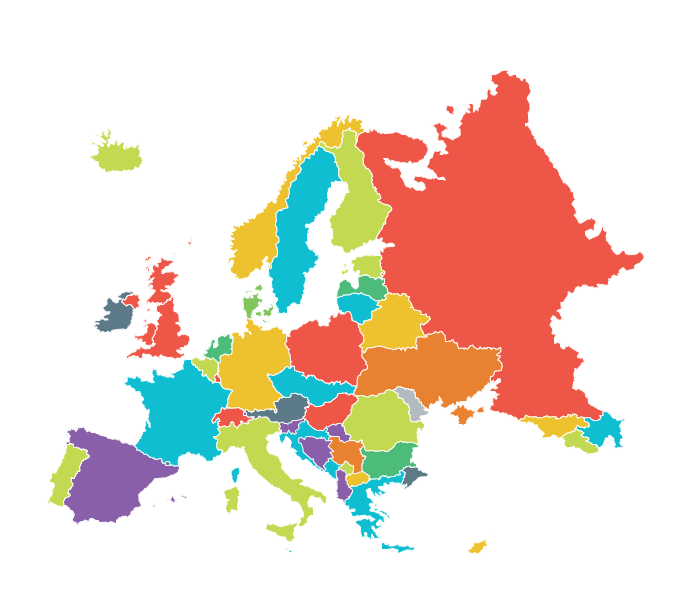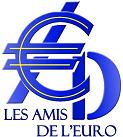Euro zone countries
Introduction
Europe and the Euro today
The euro was one of the major challenges of European integration. Its success depended on a clear division of tasks between the various institutional players.
The fundamental principle that prevails here is that derived from the Maastricht Treaty. The ECB manages the issue of euro banknotes.
On the other hand, it is the Member States that are responsible for issuing metal divisional notes through the National Central Bank or through the national mint, where one exists. Nevertheless, the ECB retains a threefold right of supervision over these issues:
- Volume of issues: the ECB determines the volume of national issues. Each country is granted a maximum mintage quota for each denomination at the beginning of the year of issue in question.
- On the common side of each banknote: the ECB sets the specifications to be met and informs the countries of the changes to be made to this side. This was the case for the new sides of the EUR 10, 20, 50 cent, EUR 1 and EUR 2 notes. Each country had to make the changes by 31 December 2008.
- On the quality of strikes: the ECB has been given an audit role in order to guarantee a high and equivalent level of all circulation strikes.
The division of roles between the institutional players has been clearly defined. This precise framework makes it possible to envisage the gradual integration of new member states into the eurozone.
POTENTIAL EU MEMBERS
- Turkey's application is progressing at a snail's pace. France and Germany prefer a "privileged association", which in fact already exists, while Great Britain prefers full membership to dilute the union a little further.)
- Iceland officially became a candidate on 17 July 2009
- Serbia has taken a step towards becoming a candidate by its constructive attitude towards the International Tribunal. The elections confirmed Serbia's desire to be anchored in the EU.
- Macedonia still dependent on Greek veto (over its name)
- Montenegro, Bosnia and Kosovo are a long way from a possible candidacy
- Moldova, Ukraine and Georgia are even further away...
- Finally, naturally European countries such as Switzerland and Norway

THE EURO ZONE AND DEPENDENCIES
The eurozone stricto sensu is made up of the 16 countries (soon to be 17) that are Member States (MS) of the EU and have introduced the euro as their currency. Slovenia was added to the original 12 on 1 January 2002, followed by Cyprus and Malta in 2008, Slovakia in 2009 and Estonia in 2011. These 16 (soon to be 17) Member States are the only ones to participate in the workings of the European Central Bank (ECB) in Frankfurt, which has sovereign powers to define the zone's monetary policy.
For the following countries (Lithuania and Latvia in particular), we will no doubt have to wait... several years (until the convergence criteria are met), but the resurgence of inflation and the looming recession risk compromising the efforts of these countries, which have succeeded in moving from a collectivist, planned economy to a real market economy in less than 20 years.
To date, the euro zone is potentially made up of 25 of the 27 Member States, since with the exception of the United Kingdom (which did not participate in the monetary aspects of Maastricht) and Denmark (which benefits from a derogation), they have all committed themselves by Treaty to adopting the euro as the single currency. Sweden had also adopted the euro, but as the country did not qualify in 1999, its government subsequently organised a referendum in violation, at least in legal terms, of its international obligations. Sweden had ratified the Maastricht Treaty.
Other sovereign states that are not members of the EU may adopt the euro as their single currency.
Monaco, San Marino, the Vatican and Andorra had already introduced the new currency on 1 January 2002. But this was for historical and practical reasons. The first three were even able to retain their existing specificity in terms of the country face and the possibility of issuing commemorative coins. Andorra, which did not have this specific tradition, switched to the Euro without any particular variant, but could well do so in the future.
In 1999, the UN, which administers Kosovo, chose to give it the Deutsch Mark (soon to be replaced by the Euro) as its currency. Montenegro's first act of independence was to "unilaterally" adopt this currency. However, this does not give it any specific rights.
In the EU proper, the case of Bulgaria is interesting: the Lev has a fixed parity with the euro, but the ECB has refused to include it in the ERM II convergence mechanism, which would in fact qualify Bulgaria.
Conversely, Denmark, which benefits from the opt-out derogation, has been operating under this system since the inception of ERM II. The day the Danes vote to end the derogations (in several areas, including currency), they will immediately qualify and will be able to introduce the euro as quickly as possible. The Danish government is currently considering the possibility of joining the Eurozone.
In addition, the currencies of the CFA franc zone in West Africa (8 countries) and Central Africa (6 countries), plus the Comorian franc, are pegged to the euro.
Other countries are looking closely at some form of euro membership. In Iceland, which is now a candidate, the business community would have liked unilateral membership of the euro, which the EU does not want. Iceland has turned away from the USA, but is not ready for membership, particularly because of the issue of fishing quotas.
